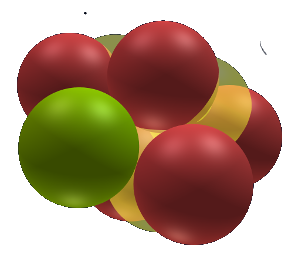Why a new model?
The Structured Atom Model (SAM) is an exploratory model of the nucleus based on the intuitive notion that the nucleus should have structural properties. It is an attempt to apply “normal physics” considerations to the atomic nucleus to gain understanding of physics at a detailed level without having to master difficult mathematics or quantum mechanics. Standard physics has refrained from any form of fixed structure for the nucleus because of constraints imposed by quantum mechanics, specifically the Heisenberg Uncertainty Principle, which assumes that nucleons in the nucleus are moving around at considerable speeds in a very restricted volume. In his book “Models of the Atomic Nucleus” the physicist Norman Cook discusses the dilemma posed by quantum physics as follows.
“Given that there is a relatively large number of nucleons packed into a relatively small nuclear volume, the next question concerns the spatial relationships of the nucleons to one another within a nucleus, and here our troubles begin. Simply to answer the question whether the nucleus is (i) a diffuse gas of nucleons in rapid, chaotic motion relative to one another, or (ii) a dense liquid of nucleons in slower motion, but interacting with near-neighbors, or (iii) a solid of nucleons locked into definite positions relative to one another, there are not three, but four major hypotheses. They are: (i) the gaseous-phase (shell or independent-particle) model, (ii) the liquid-phase (liquid-drop or collective) model, (iii) the molecule-like, semisolid-phase (alpha particle or cluster) models, and (iv) several solid-phase lattice models. We have now entered the realm of problems, paradoxes and multiple models that make nuclear physics conceptually difficult.” [Models of the Atomic Nucleus, p. 20]
SAM circumvents these issues by asserting that quantum mechanics should not be applied to the nucleus, including various forms of the uncertainty principle. We assume a rigid structure where the nucleons stay in place, only interacting electrostatically and electromagnetically.
A significant aspect of SAM is the re-introduction of the electron, or negative charge, into the nucleus. We do this by postulating that the neutron is not an independent particle on the same level as the proton or electron, but instead is a proton-electron pair (PEP), similar to the understanding before the “discovery” of the neutron in 1932. Perhaps the strongest piece of evidence that supports this notion, is that the free neutron decays into a proton and an electron with a mean lifetime of about 15 minutes. By emphasizing the role of the electron in the nucleus, we implicitly hypothesize that the basic force holding the nucleus together is electrostatic and electromagnetic in nature.
One of the main insights obtained from SAM is that the inner nuclear structure also dictates the shape of the outer electron configuration i.e., the outer electron orbitals in quantum mechanics and therefore the chemical properties of the elements, such as chemical valence or oxidation state. It is evident that these properties reflect the specific proton-electron configuration of the nucleus. Therefore, SAM’s ability to visualize the nucleus, can provide structural clues about the outer electron configuration, especially the angles of bonding between neighboring atoms. This potentially opens prospects for a new series of materials that might be used to substitute for expensive, or dangerous, compounds.
The Big Bang narrative of the origin of the elements in the hot fusion furnaces of stars, is being challenged by SAM. The experimentally gained but theoretically not understood realization that element transmutations do occur in relatively benign environments suggests that this depiction of nucleosynthesis may be flawed, or at least too limiting. An alternative possibility, suggested by SAM, is that the heavier elements beyond iron, such as gold and silver, are created primarily in-situ on the planets by transmutation of other nuclei. This would occur in intense electrical discharges such as can take place in volcanoes.
For most people chemistry is complicated, but from reactions so far, we conclude that the visualization that SAM provides can bring more transparency to the subject and help in the teaching of chemistry. By extending SAM from the realm of the nucleus to the realm of the outer electrons, therefore to the whole atom and further on to molecules, we foresee the possibility of making chemistry more accessible, even to very young students.
During SAM’s development, we have identified the geometric configurations of all elements of the Periodic Table (PTE), including multiple isotopes of elements. This has enabled us to produce a new periodic table that shows a structural configuration for each element. These evolving structural patterns drive various observable nuclear physics phenomena, including which nuclear reactions are possible, such as beta decay, tendency to fission, and probable isotopic variations or missing elements that may exist.
